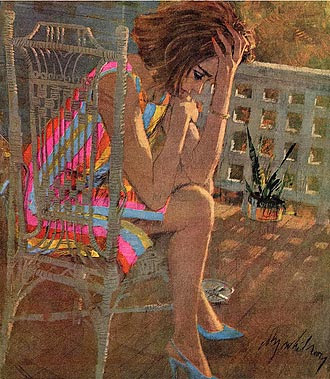Why I've Been AWOL
/
I haven't posted here recently and I feel I owe an explanation. Unfortunately, it is an explanation I wish I didn't have to use.
My wife, Pam, was diagnosed with leukemia (AML) two years ago. She went through chemotherapy and quickly went into remission. We recently found out that she has relapsed. We are now in the process of preparing for a bone marrow transplant. We will be temporarily relocating from Overland Park, KS to Omaha, NE. Pam will be receiving her transplant at the University of Nebraska Medical Center.
Over the past 2 years, I've necessarily had to learn more about hematology and AML than I ever wanted to know. A bone marrow transplant—actually, a peripheral blood stem cell transplant (PBSCT} these days—is a pretty amazing process. Bone marrow is the "factory" that generates our red and white cells, as well as platelets. Red cells are responsible for supplying oxygen. White cells fight infection, and platelets coagulate blood to prevent bleeding. This triumvirate is our immune system. A PBSCT effectively replaces the donor's malfunctioning immune system with a new replacement.
The most perfectly matched transplant is between siblings. In Pam's case, this is not an option (Her only sister was tested and was not a match—there is only a 25% chance that they would match). The alternative is an matched unrelated donor (MUD) transplant. Through genetic testing, several markers (HLA) can be identified that both the donor and patient share in common. Currently, a "10 out of 10" match is considered optimal. We were fortunate to learn that there are currently two of this level of potential donors for Pam (The donor base is administered by the National Bone Marrow Program).
A bone marrow transplant is not without potential complications. Following the transplant, the patient has no immune system and is at risk for a variety of infections. Post-transplant care has improved over the years and a variety of immuno-suppressive drugs are available to fight and counteract infection. A bone marrow transplant is the only form of transplant procedure in which the donor immune system can potentially view the patient as a foreign entity. As a result, Graft vs. Host Disease (GVHD) is a potential long-term complication. A small amount of GVHD is desirable—any residual leukemic cells are veiwed by the donor immune system as foreign and are eradicated. Severe GVHD can be life-threatening or even fatal. Again, a variety of immuno-suppressive drugs have been developed to counteract GVHD. Chronic GVHD can impact long-term patient quality of life by impacting various organs, skin, etc.

This is a photo I took of Pam and I for our 25th anniversary. I shot it just a few days before we found out Pam had relapsed. We drove up from Overland Park to Omaha today. Pam enters the Med Center tomorrow to begin the process of induction chemotherapy to destroy her leukemic marrow in preparation for the transplant. When we left, we realized that a chapter of our lives was ending and a new one beginning. We don't know what the future holds for us, but we are both positive thinkers and believe that we will come through this to eventually arrive at a "new normal".
Life Happens.
-john
My wife, Pam, was diagnosed with leukemia (AML) two years ago. She went through chemotherapy and quickly went into remission. We recently found out that she has relapsed. We are now in the process of preparing for a bone marrow transplant. We will be temporarily relocating from Overland Park, KS to Omaha, NE. Pam will be receiving her transplant at the University of Nebraska Medical Center.
Over the past 2 years, I've necessarily had to learn more about hematology and AML than I ever wanted to know. A bone marrow transplant—actually, a peripheral blood stem cell transplant (PBSCT} these days—is a pretty amazing process. Bone marrow is the "factory" that generates our red and white cells, as well as platelets. Red cells are responsible for supplying oxygen. White cells fight infection, and platelets coagulate blood to prevent bleeding. This triumvirate is our immune system. A PBSCT effectively replaces the donor's malfunctioning immune system with a new replacement.
The most perfectly matched transplant is between siblings. In Pam's case, this is not an option (Her only sister was tested and was not a match—there is only a 25% chance that they would match). The alternative is an matched unrelated donor (MUD) transplant. Through genetic testing, several markers (HLA) can be identified that both the donor and patient share in common. Currently, a "10 out of 10" match is considered optimal. We were fortunate to learn that there are currently two of this level of potential donors for Pam (The donor base is administered by the National Bone Marrow Program).
A bone marrow transplant is not without potential complications. Following the transplant, the patient has no immune system and is at risk for a variety of infections. Post-transplant care has improved over the years and a variety of immuno-suppressive drugs are available to fight and counteract infection. A bone marrow transplant is the only form of transplant procedure in which the donor immune system can potentially view the patient as a foreign entity. As a result, Graft vs. Host Disease (GVHD) is a potential long-term complication. A small amount of GVHD is desirable—any residual leukemic cells are veiwed by the donor immune system as foreign and are eradicated. Severe GVHD can be life-threatening or even fatal. Again, a variety of immuno-suppressive drugs have been developed to counteract GVHD. Chronic GVHD can impact long-term patient quality of life by impacting various organs, skin, etc.

This is a photo I took of Pam and I for our 25th anniversary. I shot it just a few days before we found out Pam had relapsed. We drove up from Overland Park to Omaha today. Pam enters the Med Center tomorrow to begin the process of induction chemotherapy to destroy her leukemic marrow in preparation for the transplant. When we left, we realized that a chapter of our lives was ending and a new one beginning. We don't know what the future holds for us, but we are both positive thinkers and believe that we will come through this to eventually arrive at a "new normal".
Life Happens.
-john




